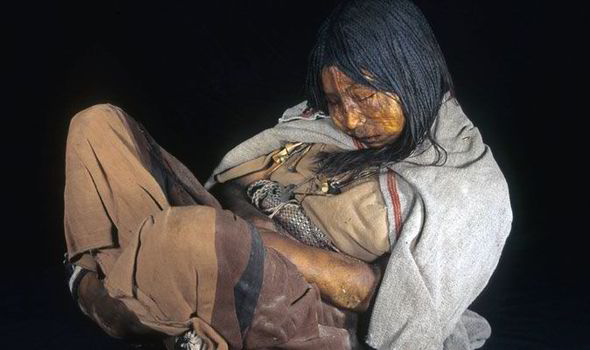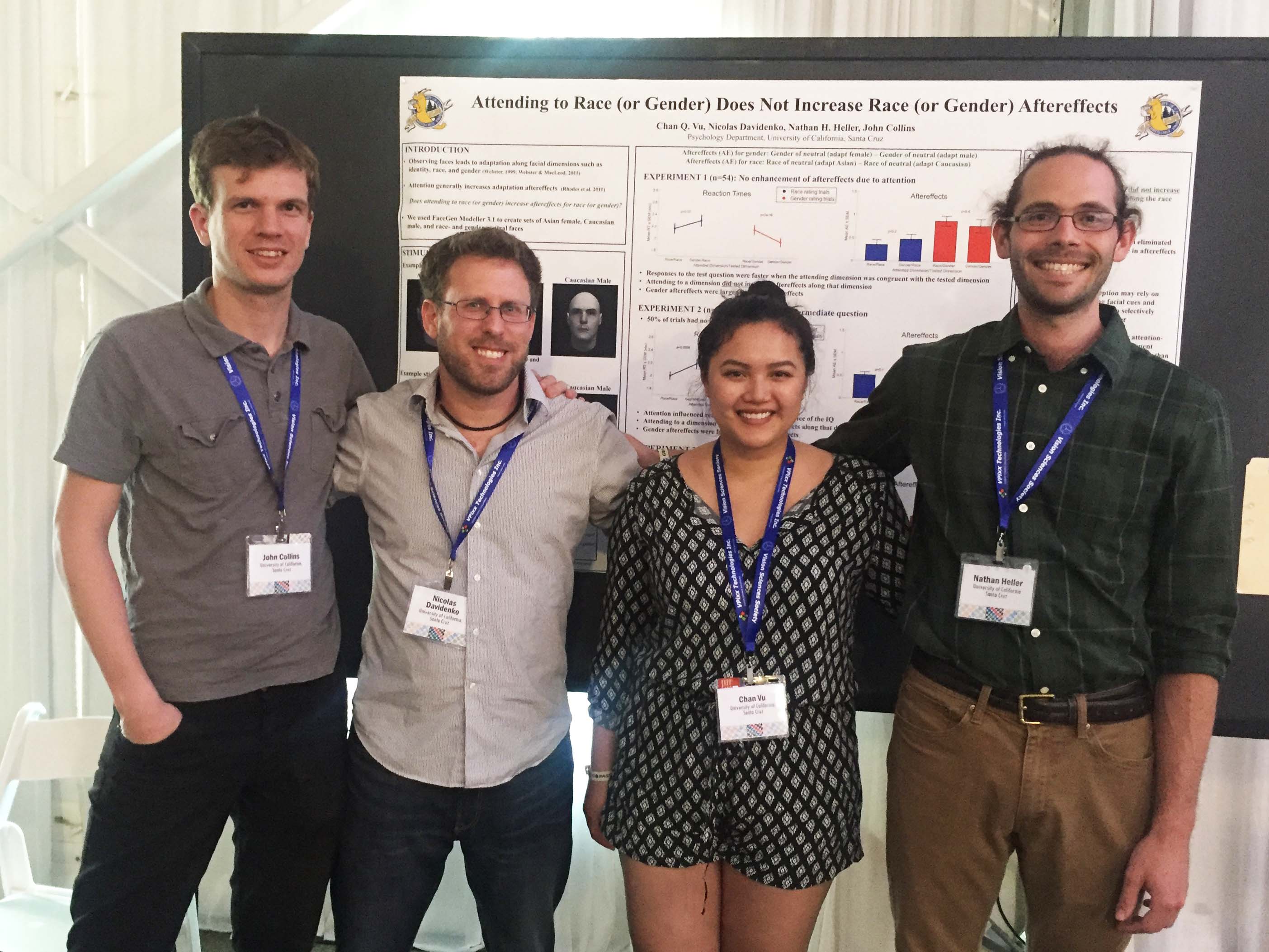From sequencing DNA from pre-Columbian mummies to examining the California strawberry farming industry and understanding how teachers teach, faculty and researchers in the Division of Social Sciences published a wide range of issues and ideas in winter quarter.
Anthropology
Chelsea Blackmore
“The political is personal,” says anthropology professor Chelsea Blackmore in her latest article, “Ancient states and ordinary people: A feminist re-imagining of ancient Maya power and the everyday.”
Using ancient Maya history as a case study, Blackmore shows how archaeologists and historians gloss over the everyday life of ordinary people in favor of studying the political elite, state, and political action. But as Blackmore demonstrates, politics and power can be found in commonplace environments. Households, communities, landscapes, gender, and identity are a microcosm of the state and can be used a lens to analyze political relationships.
Lars Fehren-Schmitz
In a joint research partnership with the University of Adelaide’s Australian Centre for Ancient DNA, Fehren-Schmitz and the UCSC Human Paleogenomics Lab analyzed ancient DNA from early American populations to better understand the devastating impact of European colonization on Native Americans. By sequencing almost 100 mitochondrial genomes from pre-Columbian South American skeletons and mummies, Fehren-Schmitz was able to examine the role European colonizers played in reducing Native American genetic diversity to the low levels that exist today.
In another study, Fehren-Schmitz looked at 150 ancient human DNA samples from Peruvian high and low altitude sites to learn how Andean highlanders, who are known to have developed the most complex society of pre-Columbian South America, managed to adapt and survive the harsh environmental conditions of the Andes.
Economics
Michael Hutchison
When Federal Reserve Chairman Ben Bernanke made announcements about tapering quantitative easing, the government’s bond buying program, what impact did that have on international and emerging economies? Economics professor Michael Hutchison worked with the National Bureau of Economic Research (NBER) to find out.
Hutchison and his collaborators discovered that Bernanke’s 2008-2009 announcements had a large impact on emerging markets. Stock market indices dropped and exchange rates would depreciate.
“In the era of financial globalization, emerging market financial markets are not insulated from expected changes in the Fed’s policy stance,” says Hutchison and his co-authors, Joshua Aizenman from University of Southern California and NBER, and Mahir Binici from the Central Bank of Turkey.
The results were published in the International Journal of Central Banking’s June 2016 edition.
Education
Kip Tellez:
In The Teaching Instinct: Explorations Into What Makes Us Human (Routledge, 2016), Kip Téllez asks readers to reconsider assumptions made about teaching and instead ask what it is, who teaches, and why.
“There is something about teaching that defies description, a mysterious ether between teacher and students in whatever context they find themselves, a recognition that this capacity is coming from somewhere very deep in our history, both our history as a human species and our personal histories,” says Téllez. His book explores that mystery, exploring the essence and instinct of teaching and teachers.
Téllez turns to a diverse range of topics and disciplines to make his argument. He examines teaching in other species, teaching across human cultures, and the development of teaching in young children. He also dips into comparative biology, evolutionary psychology, and teacher education policy to show how teaching is part of the larger human experience.
Latin American and Latino Studies
Patricia Zavella
In the April issue of North American Dialogue, Patricia Zavella explores reproductive justice - a movement that links reproductive rights to social justice. She focuses on activism and outreach to the Latina immigrants in California and uses the organization California Latinas for Reproductive Justice as a case study. Zavella shows how activists deal with multidimensional issues like undocumented people, human rights, education, and healthcare access.
Politics:
Mark Fathi Massoud
How should scholars study law in authoritarian and conflict-affected states? One promising direction is understanding the actual work that lawyers, judges, state officials, aid workers, activists and others do to promote legal remedies to social and political ills, says Mark Fathi Massoud. His article, "Ideals and Practices in the Rule of Law: An Essay on Legal Politics," was published in a special edition of Law & Social Inquiry that focused on his award-winning book, Law’s Fragile State. Included in the edition were three other articles written about Massoud's work.Massoud argues that studying law in authoritarian and conflict-affected states means addressing law both as a collection of ideals and also as a set of practices. To understand how the rule of law works (and how it fails to work), scholars and practitioners must look at the actors who promote it.
In addition, Massoud was recently named a member of the 2016 class of Andrew Carnegie Fellows.
Psychology
Nick Davidenko
Adding to the growing literature of visual adaptation and aftereffects is Nick Davidenko’s latest study published in a special edition of Frontiers dedicated to the topic.
Simply put, adaptation and aftereffects are how the brain recognizes and responds to stimuli over a prolonged period of time. For example, if you look at red stop light for a long period of time, a green light will linger over your field of vision; if you stare at a waterfall for too long it will make a stationary scene appear to drift up; or if you look at a very male face a neutral one will appear more female.
Davidenko, along with three cognitive science students Chan Vu, Nathan Heller and John Collins applied this idea to how people respond to social dimensions of the face, specifically race and gender. The researchers wanted to know if focusing attention on these specific demographic characteristics could influence aftereffects.
After conducting three experiments, Davidenko’s results suggest that attending to facial characteristics such as race or gender does not increase adaptation to those facial characteristics.
Campbell Leaper
Professor and Psychology Department Chair Campbell Leaper and former undergraduate senior thesis student Alexa Paynter published a research study on heterosexual college students’ support of dating double standards (e.g., devaluing sexually active women while praising sexually active men, man initiates and pays for date; man proposes marriage; women takes man’s last name in marriage).
Leaper and Paynter found that endorsement of these dating double standards were widespread among otherwise liberal college students. Despite major advances in gender equality, their results suggest that young heterosexual women and men commonly favor traditional dating scripts in which the man takes initiative and controls resources.
In another study, Leaper and former doctoral student Jessica McGuire looked at competition between close, same-gender friends in young adulthood. Although friendships are generally based on equal and mutual respect, conflict and competition occur in close relationships—and can potentially undermine the quality of the relationship. On average, men reported more friendship competition than women. Conversely, women were more likely than men to report distress over friendship competition over peers and academics.
Barbara Rogoff
Barbara Rogoff was featured in the National Science Foundation 2016 "STEM for All" Video Showcase.
Her project, titled “Learning by Observing: Building on Children's Resources for Learning,” highlights research on how children of Mexican-heritage and Guatemalan learn. Rogoff found that children from these backgrounds tended to use keen attention twice as much as middle-class European American children. Co-presenting with Rogoff is Dr. Maricela Correa-Chávez who received her Ph.D. in psychology at UCSC. Her work was the top publicly voted video of all 156 short films in NSF's Video Showcase. It was also one of the top videos for amount of conversation it generated.
Social Sciences:
Julie Guthman
Food studies expert Julie Guthman published a piece about the recent regulatory debates that took place in California over methyl iodide and chloropicrin, two soil fumigants strawberry growers intended to replace the popular, ozone-depleting pesticide methyl bromide. Guthman problematizes the two narratives that surround the discussion: activists who called for regulation to prevent harm to workers in terms of health and safety (their lives) on the one hand, and on the other industry that claimed restrictions of these chemicals (or a complete ban in the case of methyl iodide) would be detrimental to workers in terms of lost jobs (their livelihoods).
“My argument has been that the lives versus livelihoods trope that has so defined the debates over soil fumigants works neither analytically nor strategically,” Guthman remarks, stressing that keeping them separate perpetuate the disposability of California farm workers.
Guthman also wrote a retrospective review of Miriam Wells’ Strawberry Fields: Politics, Class, and Work in California Agriculture, the classic 1996 text about labor conditions and economic restructuring of the strawberry industry. Guthman also highlights the changes to the industry since the book was first published, and also reflects on Well’s scholarly contributions to food and agrarian studies.


